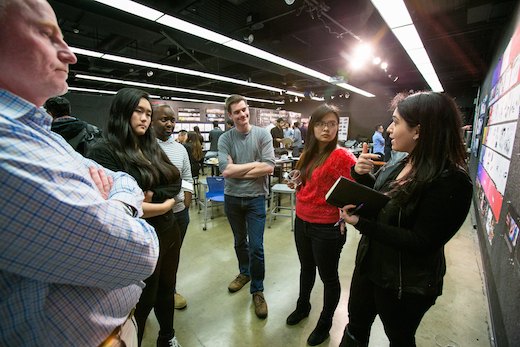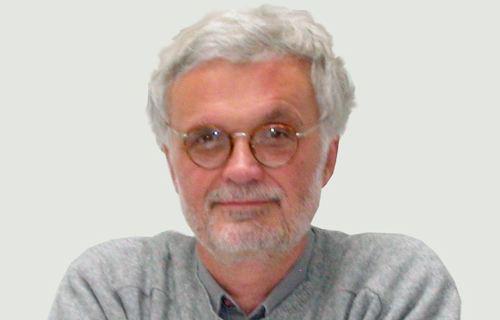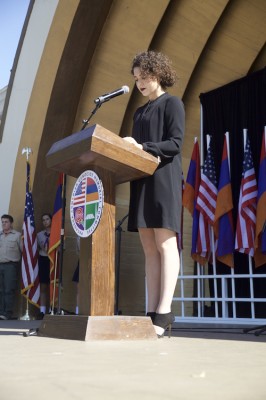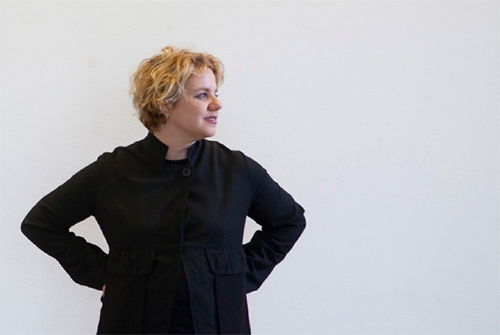What started as a passion project for Alvin Oei, has morphed into an official and active ArtCenter student club that brings the disciplines of art and design to underserved kids in the community. This past summer, some sixteen Environmental Design, Film, Graphic Design, Illustration, Interaction Design and Product Design students participated in Art Reach volunteering in two separate local Boys & Girls club locations, offering a number of twice weekly workshops.
Category Archives: Designmatters
Doing well by doing good: ArtCenter students’ social impact innovations win big at 2015 IDEA awards
Though the hum of activity in the halls and classrooms of Hillside and South campuses has temporarily lulled as we await the start of the Fall term, Summer 2015 has ended on a high note with this week’s news that ArtCenter students’ innovative prototypes and projects were honored by the prestigious Industrial Designers Society of America (IDSA) at the organization’s International Design Excellence Awards (IDEA) in Seattle on August 22.
View from the Bridge: Reflecting on #ADA25, inclusive design and Ed Roberts’ pivotal role as a pioneer for independent living

Ed Roberts in 1976 being sworn in by California Governor Jerry Brown as the State Director of Rehabilitation. Photo courtesy of the Metropolitan Transportation Committee
Last month marked the 25th anniversary of the Americans with Disabilities Act, a groundbreaking piece of civil rights legislation that prohibits discrimination against people with disabilities and guarantees that those individuals are afforded the same opportunities as everyone else. Or, as the Justice Department puts it, the Act guarantees that people with disabilities can “participate in the mainstream of American life.”
This anniversary means a great deal to me. Prior to coming to ArtCenter, I spent five years deeply involved in the development and building of the Ed Roberts Campus. This stunning and groundbreaking facility, situated atop the Ashby BART Station in Berkeley, was created by a number of disability organizations to serve as the global resource for the disability community.
The man whose name graces the campus, Ed Roberts, inspired the independent living movement and is widely considered the father of the Americans with Disabilities Act. His story is both thought provoking and exhilarating.
No developing world emergency is too great for UNICEF Innovation Lab lead and MDP alum Jeff Hall

Media Design Practices alumnus Jeffrey Hall, in black T-shirt, conducted fieldwork in Uganda before being named UNICEF’s Innovation Lab Lead for Indonesia.
As UNICEF’s Innovation Lab Lead for Indonesia, alumnus Jeffrey Hall has developed a simple standard for his projects: to use design to improve the quality of people’s daily lives. “I collaborate with some amazing people, both in the U.N. and the creative community, to see how innovative approaches can be applied to improving their programs, technology, process or partnerships,” says Hall.
Future road trip: Autospaces 2025 to explore the changing automotive landscape

Students Angela Dong, Thokozani Mabena,Vivia Liu and Sarineh Issagholian discuss their concepts with Jaguar Land Rover representatives at the New Car Experiences midterm. Photo: Chris Hatcher
It’s the end of the schlep as we know it. And we feel fine.
Well, perhaps not quite yet, but thanks to rapidly evolving technology making autonomous vehicles possible, that daunting commute we face every day may soon be a thing of the past.
Tomorrow in the Wind Tunnel at South Campus, Art Center hosts Autospaces 2025, a one-day symposium that brings together designers, researchers, and government and industry leaders to explore issues of connectivity, trust and mediation with autonomous and semi-autonomous vehicles.
From Insulin tape to reusable sanitary pads: Meet the 2015 Denhart Family Sustainability Prizewinners
![Denhart Sustainability Prize jurors (from L): Kristin Brown [Principal in charge of sustainability, Walt Disney Imagineering Research & Development], Christian Denhart [representing the Denhart family and Art Center Alumnus] and Heidrun Mumper-Drumm [Professor and Director Sustainability Initiatives, Art Center]](http://blogs.artcenter.edu/dottedline/wp-content/uploads/2015/05/denhart-pic.jpg)
Denhart Sustainability Prize jurors (from L): Kristin Brown [Principal in charge of sustainability, Walt Disney Imagineering Research & Development], Christian Denhart [representing the Denhart family and Art Center Alumnus] and Heidrun Mumper-Drumm [Professor and Director Sustainability Initiatives, Art Center]
1st Place / $15,000/ OATH: INSULIN TAPE SYSTEM / Martin Francisco
Product Design student Martin Francisco received the grand prize for ‘Oath,’ an innovative insulin delivery system that provides individuals with an accurate and painless method of dispensing insulin, while dramatically reducing material waste and environmental impact.
Oath is designed for aging adults, who have issues with dexterity, needle safety, storing and measuring proper dosages when administering liquid insulin. The tape and dispenser system makes using Oath as easy as applying and removing a Band-Aid. Moreover, Oath has 72% fewer environmental impacts over its life cycle when compared to the current insulin pen. The ergonomic Oath design accomplishes this by reducing the number of materials and components, minimizing waste at all stages, and using non-toxic, recyclable and renewable resources.
Pasadena unveils alum Catherine Menard’s Armenian Genocide Memorial
Saturday, April 18th, 2015, was a blistering hot day in Pasadena Memorial Park. But the day’s speakers and many in the crowd wore black to the unveiling of the Pasadena Armenian Genocide Memorial, designed by alum Catherine Menard (MFA 14 Environmental Design), whose teardrop concept for the monument was chosen as the winner in 2014 competition, launched by the Pasadena Armenian Genocide Memorial Committee. We caught up with Menard on this momentous occasion to hear how she approached the weight of commemorating the estimated 1.5 million victims who died during a campaign against Armenians and other Christian minorities beginning in 1915, as well as how the experience has changed her.
How did you learn about the competition?
I was asked by Professor James Meraz to join a studio that he created through Designmatters for the specific purpose of designing memorials that we would then submit to the competition.
The Sky is the Limit: An Interview with Mariana Amatullo, Designmatters Vice President
The following interview of Mariana Amatullo, Vice President of Designmatters, appeared in Impact Design Hub. Discover how her process works and what she has learned from 14 years of running Designmatters.
Allan Chochinov: Mariana, I’d like to start with two questions that I teach my students to ask: What gets you out of bed in the morning and what keeps you up at night? What are you most excited about right now, and what are you most worried about?1
Mariana Amatullo: I would say that what gets me up in the morning and motivates me deeply is living in a moment in time where there is an important call for, and recognition about, the unique value design and designers may bring to shaping and promoting processes of societal change. In this sense, I consider myself fortunate to be participating in a field or inquiry and practice—which gets referred to in a variety of ways as design for social innovation, social design, design for social impact—that is incredibly dynamic, complex and rewarding. What keeps me up at night is the other side of the coin, if you will, of the same motivation: ensuring that we do not fall short on delivering on the promise of design in this space. In other words, making certain that this emergent field not become “the design fad that failed” because we somehow did not honor that promise with the systematic rigor and boundless imagination required for success.
Art Center @ SXSW Interactive 2015: Frank Lloyd Wright, Princess Reema and David Chang

Let’s face it, the essential ingredients comprising daily life in the Digital Age are in a state of head-spinningly rapid change, we’re often just racing to keep up, unaware of the impact the onslaught of the new. Sometimes it’s hard not to wonder what’s been lost now that we have unlimited distractions, a highly curated set of entertainment options and no space for boredom. What are the unforeseen implications of the increasingly widespread adoption of the internet of things, artificial intelligence and the shared economy? How do we create a more inclusive and equitable environment for everyone who steps into the digital domain?
These were just a few of the thorny and thought-provoking questions addressed within the vast offerings of the 2015 SXSW Interactive program. In fact, this year’s lineup was so densely packed with timely, topical and totally useful panels, workshops and mentoring meet-ups, navigating the offerings was an exercise in content curation, information architecture and design thinking. Because so much of the subject matter covered within the festival’s many panels and lectures is so indisputably germane to the Art Center community, we attended the festival targeting the events most Art Center-relevant events, which we’ll recap to you in the form of key takeaways parceled out within a series of blog posts over the next three days.
Prominent theorist Ezio Manzini to discuss new book connecting design culture to social change

Ezio Manzini
Ezio Manzini, a leading force in social impact design and founder of the DESIS (Design for Social Innovation towards Sustainability) network of university-based design labs (including Art Center’s Designmatters department), will present a lecture based on ideas addressed within his new book, Design, When Everybody Designs, published by MIT Press. The event, which begins at 7pm in Art Center’s LA Times Media Center, will include an hour-long talk about design culture’s role in driving the future of social change and a book signing at 8pm.
The following excerpt from Manzini’s book, which was originally published as part of Mapping Social Design‘s Expert Workshop, offers an enticing preview of the innovative and deeply-considered ideas Manzini will address in his presentation at Art Center next week:
In the 21st century social innovation will be interwoven with design as both stimulus and objective, indeed it will stimulate design as much as technical innovation did in the 20th century. At the same time, it will be what a growing proportion of design activities will be seeking to achieve. In principle, design has all the potentialities to play a major role in triggering and supporting social change and therefore becoming design for social innovation. Today we are at the beginning of this journey and we still need a better understanding of the possibilities, the limits and the implications of this emerging design mode, but what is already clear is that design for social innovation is not a new discipline: it is simply one of the ways in which contemporary design is appearing. Therefore, what it requires is not so much a specific set of skills and methods, but a new culture, a new way of looking at the world and at what design can do with and for people living in it.



